NASA's IceBridge seeking new view of changing sea ice
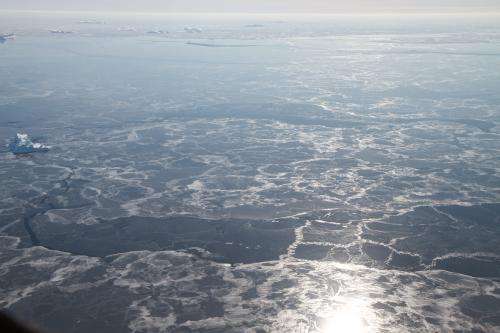
This year scientists working on NASA's Operation IceBridge, a multi-year airborne science mission to study changing ice conditions at both poles, debuted a new data product with the potential to improve Arctic sea ice forecasts.
Using new data processing techniques, IceBridge scientists were able to release an experimental quick look product before the end of the 2012 Arctic campaign. The main challenge faced when producing data for seasonal forecasts is the time needed to crunch the numbers, something that has in the past taken IceBridge scientists more than six months to do after the data was collected in the spring. This is too late to use for Arctic sea ice forecasts of the annual seasonal minimum, which takes place in September.
The new product could potentially be used in seasonal sea ice forecasts in the future. "The community is excited about it," said IceBridge science team co-lead Jackie Richter-Menge of the U.S. Army Corps of Engineers Cold Regions Research Laboratory, Hanover, N.H. "We're hoping to build on this season's momentum and interest."
Scientists have been keeping an eye on Arctic sea ice in recent years because it is changing and they want to understand what those changes might mean. Arctic sea ice grows and recedes in a seasonal pattern, with a maximum coverage in March and a minimum in September. These high and low points vary from year to year, but there is a clear trend toward smaller minimums that mean more open water in the Arctic each summer and fall. This decrease in ice is already affecting ocean and terrestrial life in the Arctic, accelerating warming in the region and leading to economic and social changes.
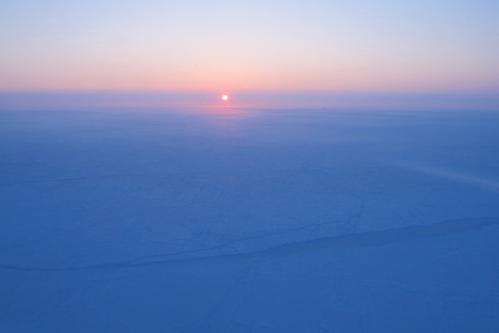
"Sea ice is a sensitive indicator of a changing climate," said NASA researcher Nathan Kurtz at NASA's Goddard Space Flight Center, Greenbelt, Md. It can also act as a feedback to warming in the Arctic. Because ice is much lighter in color than ocean water it has a higher albedo, meaning it reflects more sunlight than water. "A loss of sea ice can cause the Earth as a whole to warm," Kurtz said. The loss of sea ice has also been linked to shifts in weather patterns and distribution of nutrients in the ocean.
Getting the Whole Picture
Sea ice modulates a complex interaction between two systems—the ocean and the atmosphere—and is affected by a number of factors. Surface temperature is the one that most readily comes to mind. Warming air and ocean temperatures melt the ice over time. But ice thickness and the amount of snow that accumulates on it are important in controlling the amount of growth and melt. As anyone who has been to a summer barbecue knows, larger masses of ice melt slower than smaller ones. Thicker sea ice will stay around longer than thin ice.
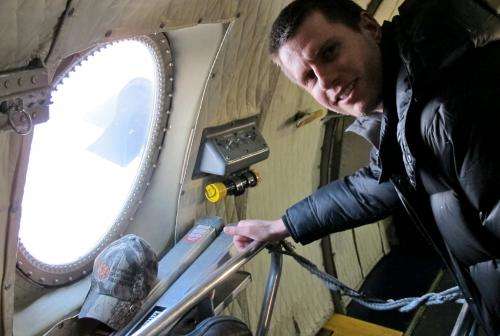
The largest portion of sea ice is hidden under the water's surface, which makes measuring its thickness trickier than getting its extent. To find thickness, researchers rely on a variety of advanced instruments and a law of physics that goes back to ancient Greece—the Archimedes Principle. "If you know how much ice is above the water and know its density, you can calculate the thickness," said Kurtz. "On average 80 to 90 percent of the ice is below the surface." With this knowledge, it's possible to take the ice freeboard, the amount above the water's surface, and calculate its thickness. IceBridge's Airborne Topographic Mapper, or ATM, instrument uses a laser to measure how high the ice surface is above sea level. But snow accumulation means that what ATM measures is not just ice. To address this complication, IceBridge uses one of its radar instruments to measure snow thickness, and then with simple subtraction, researchers can figure out the true ice freeboard.
It's important to factor for snow thickness because while it adds height to sea ice, it adds less mass than an equivalent thickness of ice. But snow thickness is a valuable measurement in its own right. "There's growing interest in our snow depth measurements as a stand-alone product," Richter-Menge said.
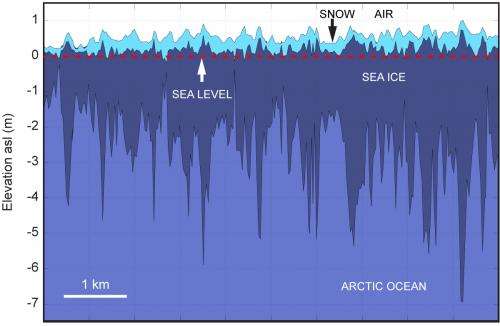
Snow affects how sea ice grows and melts by insulating it, slowing growth, and further increasing albedo as snow is even lighter colored than ice. But snow can also speed up melting. Snow melts, forming ponds of water that—due to increased albedo—absorb more heat than either snow or ice would. Snow also plays a role in the Arctic ecosystem. "For instance, snow needs to be a certain depth for the survival of seal pups," said Richter-Menge.
Putting It All Together
Creating a new data product calls for new processing methods and a good understanding of how data are collected. To facilitate this, Kurtz traveled to Greenland during the 2012 Arctic campaign. For about two weeks in March, Kurtz participated in survey flights on the NASA P-3B aircraft to see how instrument operators gathered sea ice data. "I asked a lot of questions," Kurtz said. "And I got a good impression for a short stay." Although it is tempting to use this data in this year's seasonal forecasts, both Kurtz and Richter-Menge caution that while they are optimistic about the new product, it still needs testing. After the upcoming sea ice minimum, researchers can compare the quick look and traditional products and test models using the quick look data against observations. "As the season goes on, we'll see how useful the quick look product is," Richter-Menge said.
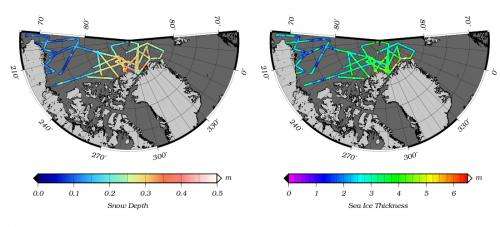
Next year's Arctic campaign will see further refinement of the methods used to create the quick look product. "The key is knowing how to deal with the data," Kurtz said. He plans to return to Greenland in 2013 to work on ways to speed up processing. "I learned a lot this year," Kurtz said. "It should be easier now that I've done it once."
More information: For more information on the Airborne Topographic Mapper and snow radar instruments, visit: www.nasa.gov/mission_pages/ice … instruments/atm.html and www.nasa.gov/mission_pages/ice … nstruments/snow.html
Provided by NASA
















